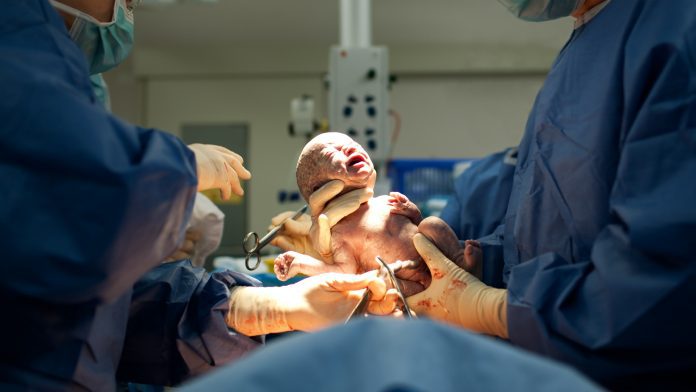
A research team from Flinders University has investigated the risk of emergency caesareans on a baby’s development.
Labour and natural childbirth cause stress on a mother’s body, however, the risk of emergency caesareans that have to be administered in emergencies has been recently assessed by Flinders University researchers. Scientists have noted the associated risks with inflammatory gene expression in the placenta in women who have had caesareans.
How did scientists investigate the risk of emergency caesareans?
The study, led by Flinders University’s Pregnancy Health and Beyond (PHaB) Lab and other researchers, investigated the risk of emergency caesareans, by assessing the differences in placenta inflammation markers.
These observations were taken after the delivery of both male and female babies involved in 20 emergency caesarean procedures. This was then compared to 40 placentas from vaginal (or ‘natural’) deliveries and 10 placentas from an elective C-section at an Adelaide Public Maternity Hospital between 2006 and 2018.
What did these results reveal?
“Labour is an inherently inflammatory process, so if you have a planned or pre-labour caesarean section there will be less inflammasome activation than seen in an emergency C-section in a woman already in labour or in an unassisted vaginal birth,” explained Dr Anya Arthurs, lead author the novel article in Frontiers of Immunology.
“In births where labour is involved, there is more inflammatory gene expression in the placenta if you had an emergency caesarean section compared to a vaginal birth.
“This study also indicates that babies, in particular females, could be more compromised in their development and long-term health and wellbeing after an emergency C-section.”
“Interestingly, while placentas tested from baby boys have more inflammatory gene expression from a vaginal or ‘natural’ birth, baby girls born in emergency caesarean section deliveries have more inflammatory markers,” added Professor Claire Roberts, senior author, and Professor at Flinders Health and Medical Research Institute.
“One explanation for this could be our finding that placentas from baby boys tend to put out ‘alarm signals’ (known as ‘interleukin-33’) in times of fetal distress, which we did not see in the placentas from baby girls. This could help to mitigate the amount of inflammation.”
What does this mean for future healthcare applications?
This study into the risk of emergency caesareans revealed an assessment of inflammatory gene expression in the placenta that could be utilised to identify babies who have been exposed to higher-than-normal levels of inflammation at birth, and so create incentives to monitor their development and long-term health and wellbeing more closely, concluded the researchers.
The article, ‘Placental inflammasome mRNA levels differ by mode of delivery and fetal sex’ (2022) by Anya L Arthurs, Melanie D Smith, Mhyles D Hintural, James Breen (SAHMRI), Dylan McCullough, Francesca I Thornton, Shalem Y Leemaqz, Gustaaf A Dekker (University of Adelaide), Tanja Jankovic-Karasoulos, and Claire T Roberts has been published in Frontiers of Immunology.
























